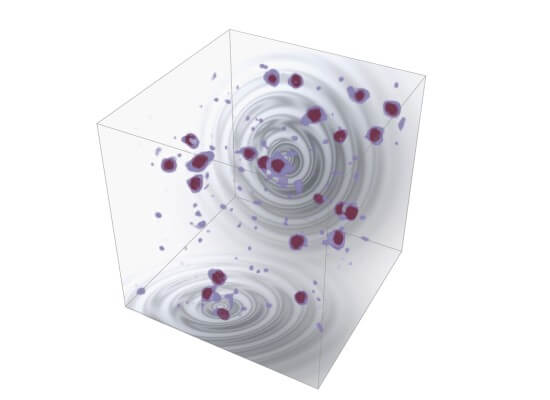New research has revealed an intriguing discovery about the early moments of our universe.
A study published in Physical Review Letters unveils a mechanism that generates gravitational waves, with the potential to shed light on the universe’s mysterious beginnings.
The Big Bang was followed by a remarkable period known as inflation, where the universe expanded rapidly. Many cosmological theories suggest that this expansion led to the formation of oscillons. These oscillons are unique structures that arise from oscillating fields, like the inflaton field, which oscillate at high frequencies. Unlike other structures, oscillons can persist for extended periods. And here’s the exciting part: the eventual decay of these oscillons creates gravitational waves, which are ripples in the fabric of space-time.
Researchers from the Kavli Institute for the Physics and Mathematics of the universe (Kavli IPMU) conducted a study to explore the behavior of the inflaton field during the early universe. Led by Project Researcher Kaloian D. Lozanov and Visiting Associate Scientist Volodymyr Takhistov, the team simulated the evolution of the inflaton field and confirmed the presence of oscillons. Furthermore, they discovered that the decay of these oscillons would generate gravitational waves that upcoming gravitational wave observatories can detect.
This remarkable finding provides an alternative method to study the dynamics of the early universe, independent of the traditional cosmic microwave background radiation. The detection of these gravitational waves would open up a whole new window into the earliest moments of our universe, offering valuable insights into the fundamental questions of cosmology.
As technology advances, with the development of more sophisticated gravitational wave detectors and increased supercomputing capabilities, we can anticipate even more remarkable discoveries in the years to come. The study showcases the power of combining theoretical models, advanced computational techniques, and observations to unravel the mysteries of the universe’s evolution.
The groundbreaking research conducted by the team from the Kavli IPMU and published in Physical Review Letters on May 2 marks a significant step forward in our understanding of the universe’s ancient history. Exciting times lie ahead as we continue to unveil the secrets of the cosmos.


